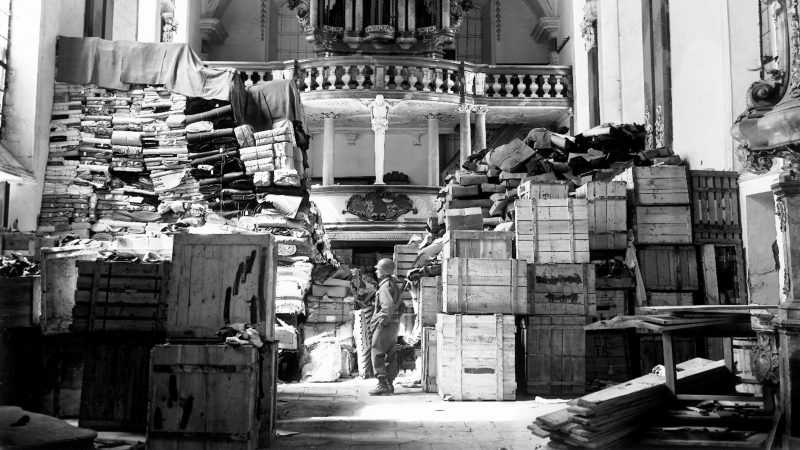The Suddeutsche Zeitung newspaper has printed an expose inferring that millions of dollars worth of looted Nazi art, that was entrusted to the Bavarian authorities by the American forces at the end of WWII, was never returned to their rightful Jewish owners, but misappropriated by the Bavarian authorities. The newspaper article is based on an exhaustive investigation undertaken by the British NGO, Commission for Looted Art in Europe, who found several pieces of art that should have been returned and never were.
A group of American art historian served on the front lines with the express purpose of rescuing as many pieces of art and other artefacts as they could. Their work was the motivation for the film, Monuments Men, starring Matt Damon and George Clooney that was released in 2014 and their work in saving Europe’s cultural heritage resulted in the saving of over 10,000 pieces of art.
At the end of the war, these items were turned over to the Bavarian authorities with the intention that they will be returned to the Jewish families from which they were stolen.
A 300-year old painting by Dutch artist, Jan van der Heyden, of Dutch Square was stolen from a Jewish family living in Vienna, but was not returned to the family; instead, it was sold to Henriette Hoffmann, the wife of the Nazi governor of Vienna who was convicted of war crimes at Nuremberg. The painting was then sold to its current owner, the Xanten Cathedral in North Rhine-Westphalia, at a considerable profit.
A copy of a Canaletto, part of Hitler’s private collection, now hangs in the German Parliament Association’s offices in Bonn and another looted artwork, taken from Hermann Goring’s private collection, now hangs in an official government guesthouse.
Suddeutsche Zeitung alleged that the Bavarian State Archive had refused access to their papers, but this was strenuously denied by the Archive. The Director of the Archive, Margit Knom-Marcon, said, “All governmental agencies are required by law to make their documents accessible. And the State Art Collection is a governmental agency. But we do not have a single document from the State Art Collection’s archive.”
